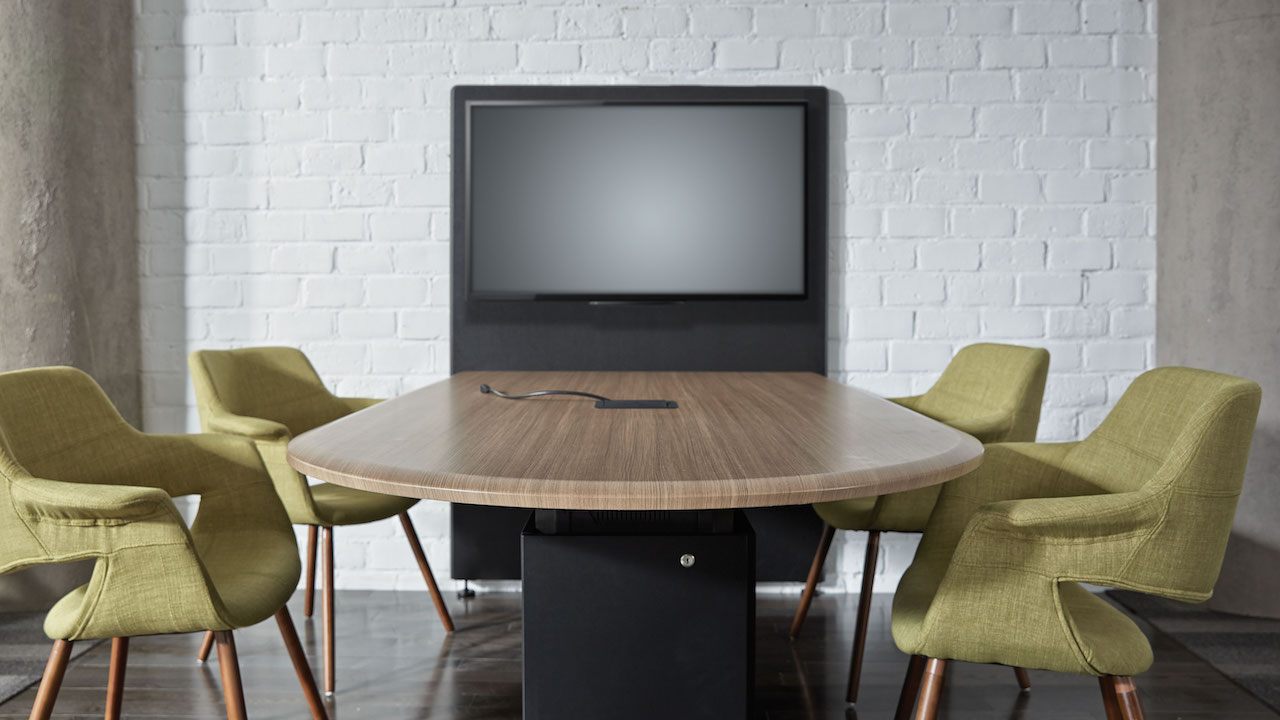Embrace the huddle. No, not the football kind of huddle; the one you’ve been tasked to implement in a stamp-sized room to support the growing demand for quick, easy, and most importantly reliable collaboration experiences. With more office spaces opting for open floor plans, more employees telecommuting, and tech-savvy millennials joining the workforce, huddle rooms have become the de facto standard for promoting brainstorming, creativity, and collaboration—either face-to-face or remotely. Despite their diminutive size, however, these spaces can present hefty tech challenges that can be overlooked and difficult to tackle. That’s why they require thoughtful planning and strategizing.


THINK DIFFERENTLY
Many huddle rooms necessitate audio, video, and screen-sharing capabilities that were once reserved for boardrooms with C-level participants. However, these rooms aren’t small-scale boardrooms. They’re daily workhorses whose occupants must be able to start a meeting quickly and operate the technology to support them intuitively. When employees struggle to share their screen or have to reboot the audio source, it hampers productivity and innovation. Your job is to remove any barriers that support the natural flow of information and exchange of ideas.
GATHER DATA
A successful huddle room is one that’s used often, because it delivers what the users need to be productive. Before you sling any old system onto the table, talk to your users to find out what their meetings currently look like and what they’re missing. Zero in on what your users really need to collaborate, and then identify what technology and furniture will support those needs. For example, should the table be round to complement face-to-face collaboration, or does it need to terminate at a screen for videoconferencing? Will the room need a dedicated computer for screen sharing? Or is the organization a primarily BYOD culture, necessitating ample and convenient inputs for mobile devices or laptops?
IDENTIFY THE ROOM LOCATION
If you’re working from a blank slate, it’s much easier to build out a huddle room. But the more likely reality is that you’ll have to work within the constraints of a preexisting space, flipping a former office into a vibrant collaborative space for four to six participants and without a dedicated tech closet or rack room close by to house AV components. The good news is that there are professional rack solutions designed to house localized systems, including tables, credenzas, and options that take advantage of the unused space behind a flat screen.
FREE THE ROOM FROM CLUTTER
Huddle rooms should be clean and welcoming with the work surfaces reserved solely for participants. There shouldn’t be cords and technology dripping off the limited table space. New AV storage and furniture solutions can conveniently and discreetly house devices to remove clutter, which will maximize the available workspace and make users feel comfortable getting down to business.
DON’T OVERLOOK SYSTEMS BEST PRACTICES
Even if AV components have to live in the room, you still have to be careful about system design. Although it’s trickier to balance cable, thermal, and power management requirements with space constraints and the small number of power outlets available in the room, there are options that ease these pain points. Look for shelves or furniture specifically designed to mount small devices, which will ensure proper thermal management, protect component connections, and grant easy access to the system components. Likewise, don’t wage a war against the growing number of DC-powered devices and their wall warts you’ll likely encounter in these spaces. Rather than squeezing them all in and introducing possible points of failure (and user frustration), look for compact universal power solutions that can be wired to eliminate the burden and bulk of wall warts.
Huddle rooms may be small, but they still require the same approach as a spacious executive boardroom. And unlike a boardroom where the format, user, and technology needs are more defined, huddle rooms can be much more of a moving target. To design successful huddle rooms, the best strategy is a thoughtful strategy.
Megan Knedler is the director of marketing at Middle Atlantic Products.